It is no longer the exception to find yourself at home with numerous devices to recharge. It is easy for each user to own more than one, including smartphones, tablets and notebooks, not to mention those of the family.
And then, having a real charging station at home is not an idea to be underestimated. On the contrary. We tried the USB Smart Charger proposed by GearBest, here's how it looks, what are the technical characteristics and how we found ourselves.
The charging station, upon opening the package, appears as a small rectangle, very light and satisfactory to the eye. The plastics are not of superior quality, but overall it doesn't matter, considering what its purpose is.
In total it offers eight inputs, including 6 USB-A standard , 1 USB compatible with the standard QC 3.0 for fast charging , and a USB-C input , particularly useful if you have USB-C cables.
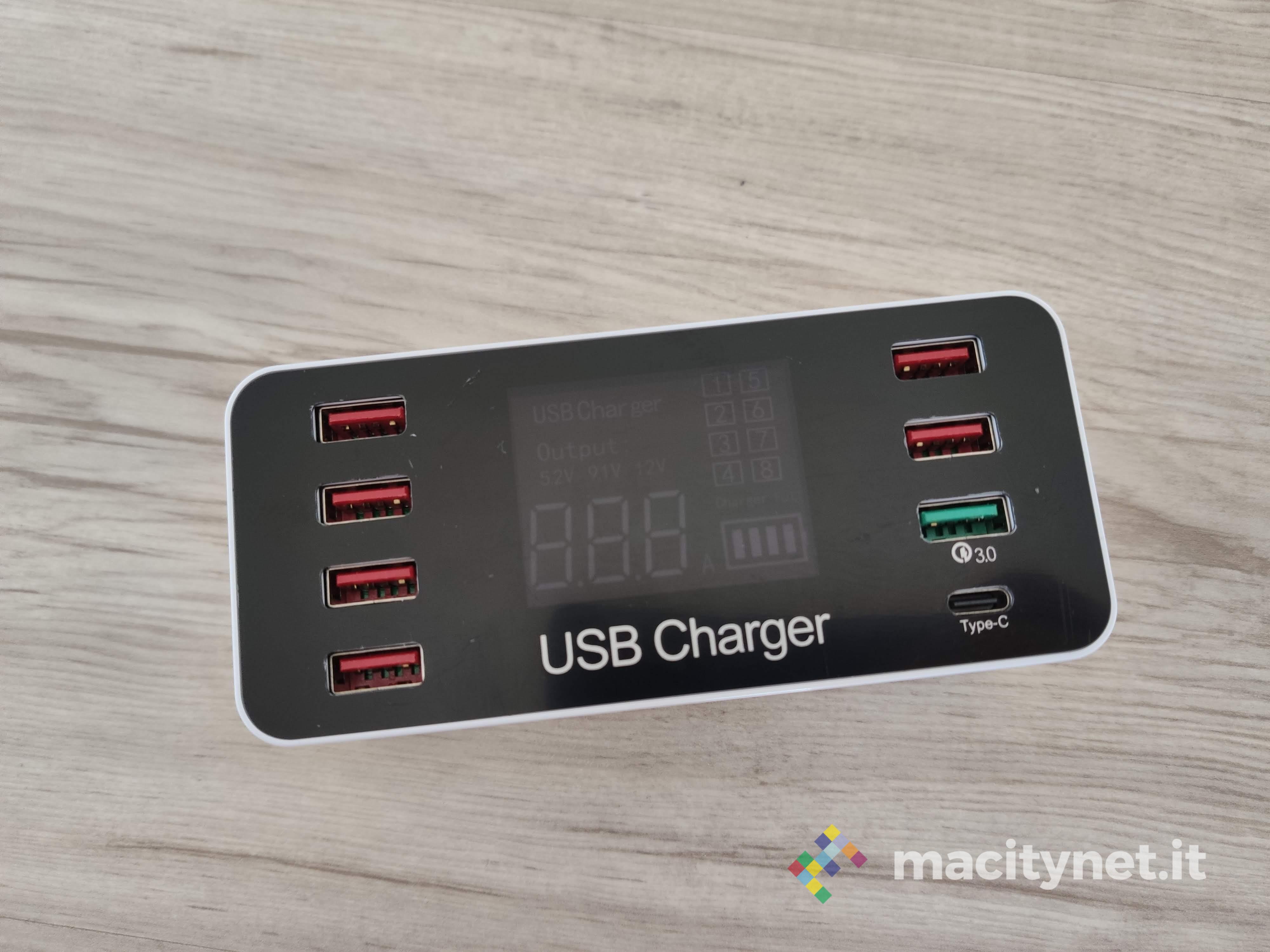
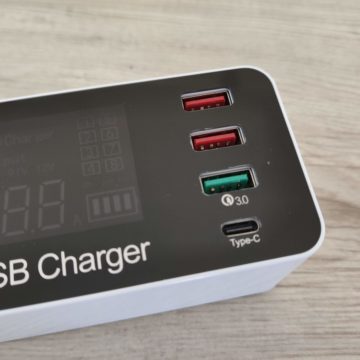
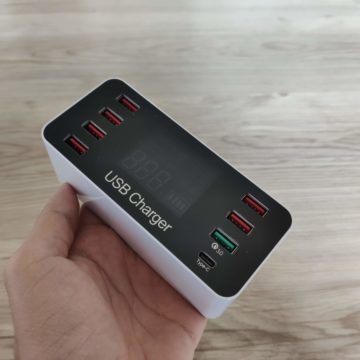
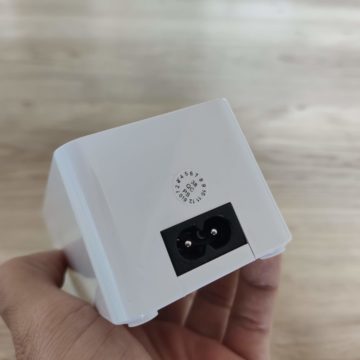
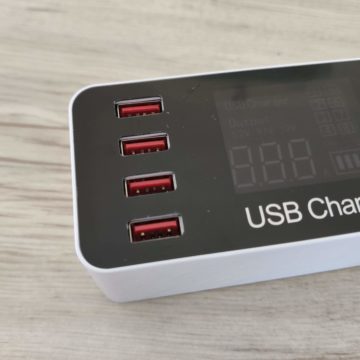
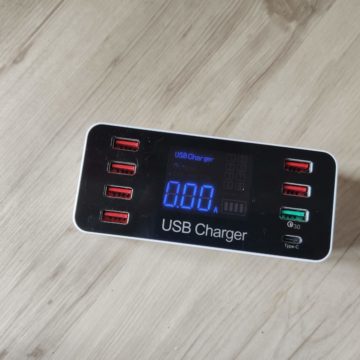
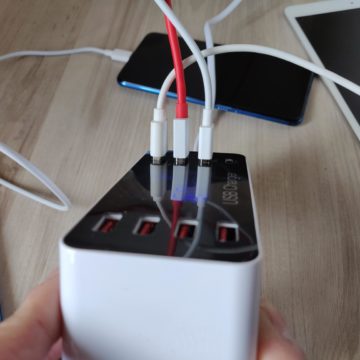
The total power it can deliver is 45W with an output of 5V9A , while the individual ports have a maximum output of 2.4A. Only the USB QC 3.0 port offers different charging modes, depending on the device that is connected, between 5V3A, 9V2A and 12V1.5A. However, the maximum total output power is 8A .
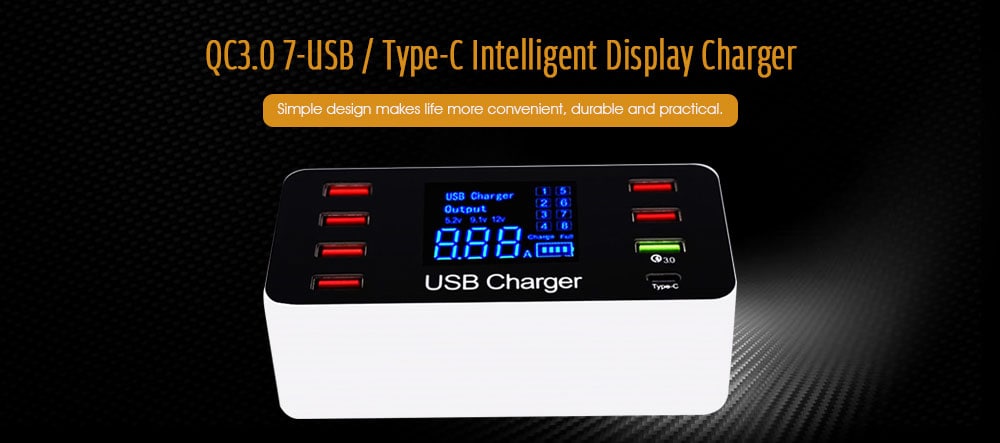
Beyond the USB sockets, in the center of the device there is a LED screen , non-touchscreen, and with which it is not possible to interact, which provides the charging information of the connected devices , providing information on current and voltage during charging. This display allows the user to understand how he is charging his smartphone and if he is getting the maximum output power.
If several devices are connected at a time, the display will show, in rotation, the information of the various connected devices, identifying the various USB ports with numbers from 1 to 8. It is not possible to interact with the display, choosing which USB to show and the order in which to show them, but the rotation will be automatic.
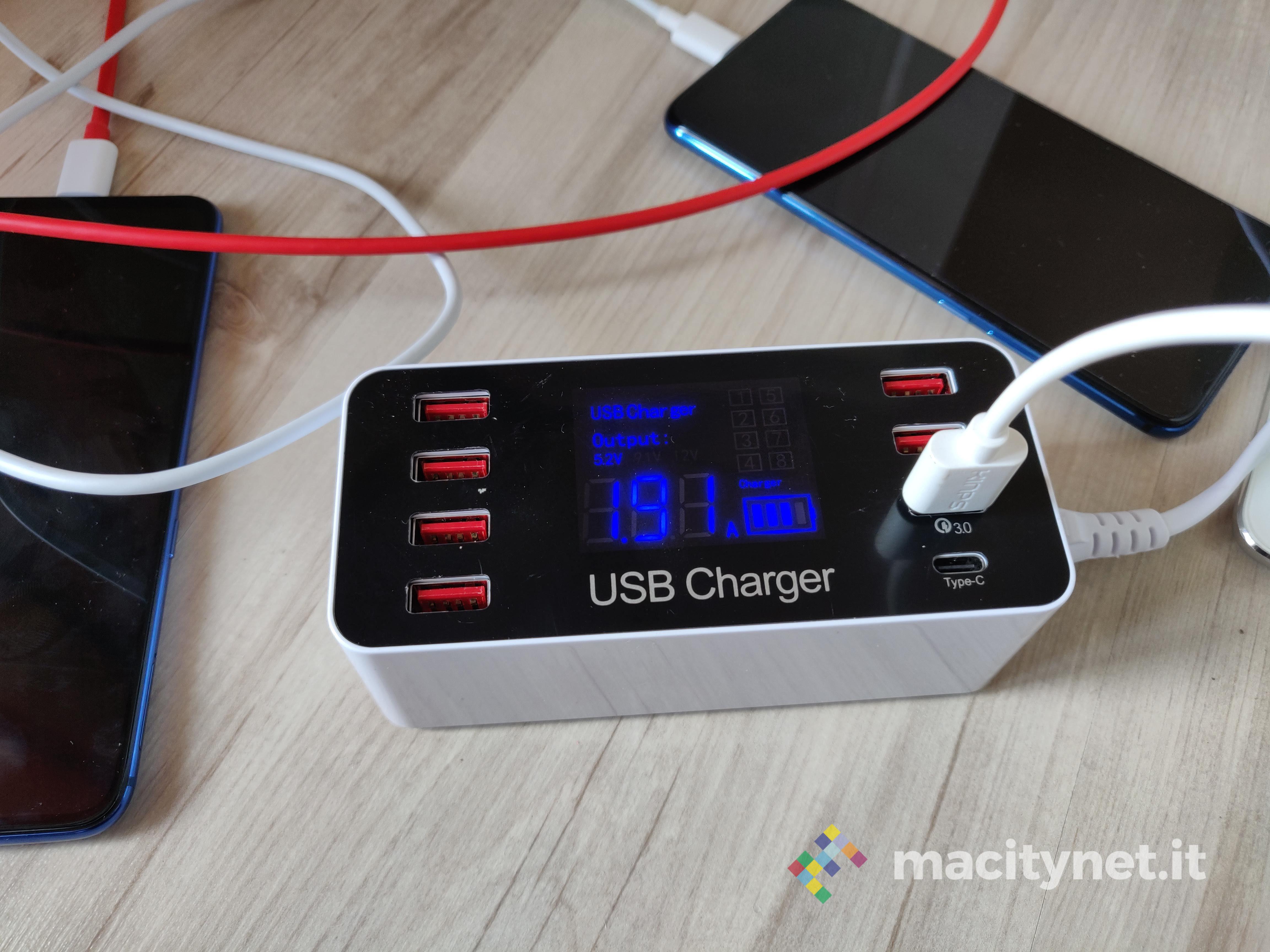
Charging test
We have, of course, put the USB Smart Charger under stress. With the standard USB ports we have almost always obtained a charge at around 1.7A, while the QC 3.0 USB port makes the difference with devices that support fast charging.
For example, on Xiaomi Mi 9 we got a fast charge at 2A, while with Honor View 20 we went to an even faster charge, which stood at 2.2A.
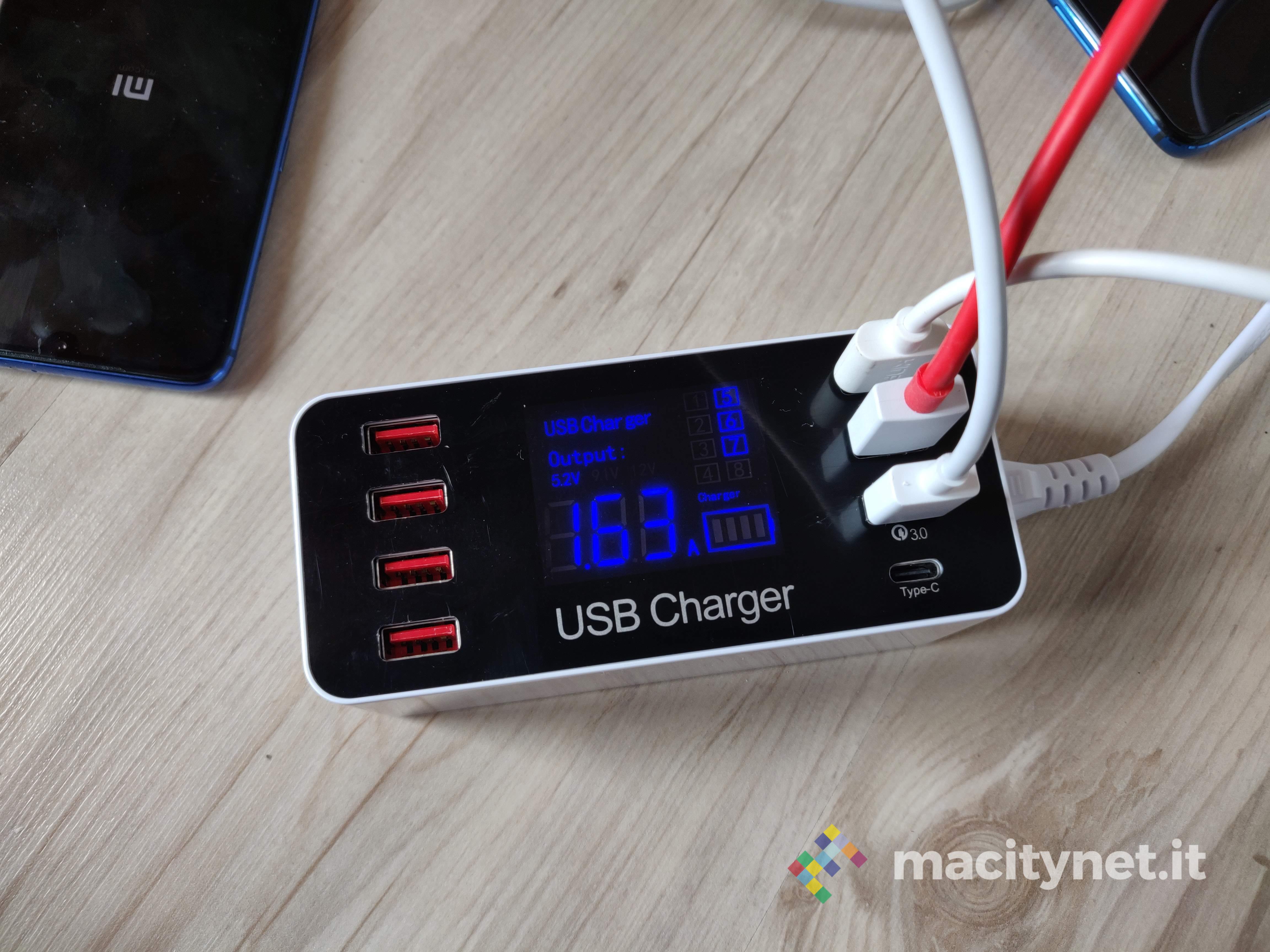
Nothing to do, however, with the OnePlus devices, which instead stopped at 1.76A even on the USB QC 3.0 port. As regards, however, Apple devices, we were able to deliver a stable recharge at 1.16A in the standard USB, while on the USB QC 3.0 the maximum speed reached is 2.5A.
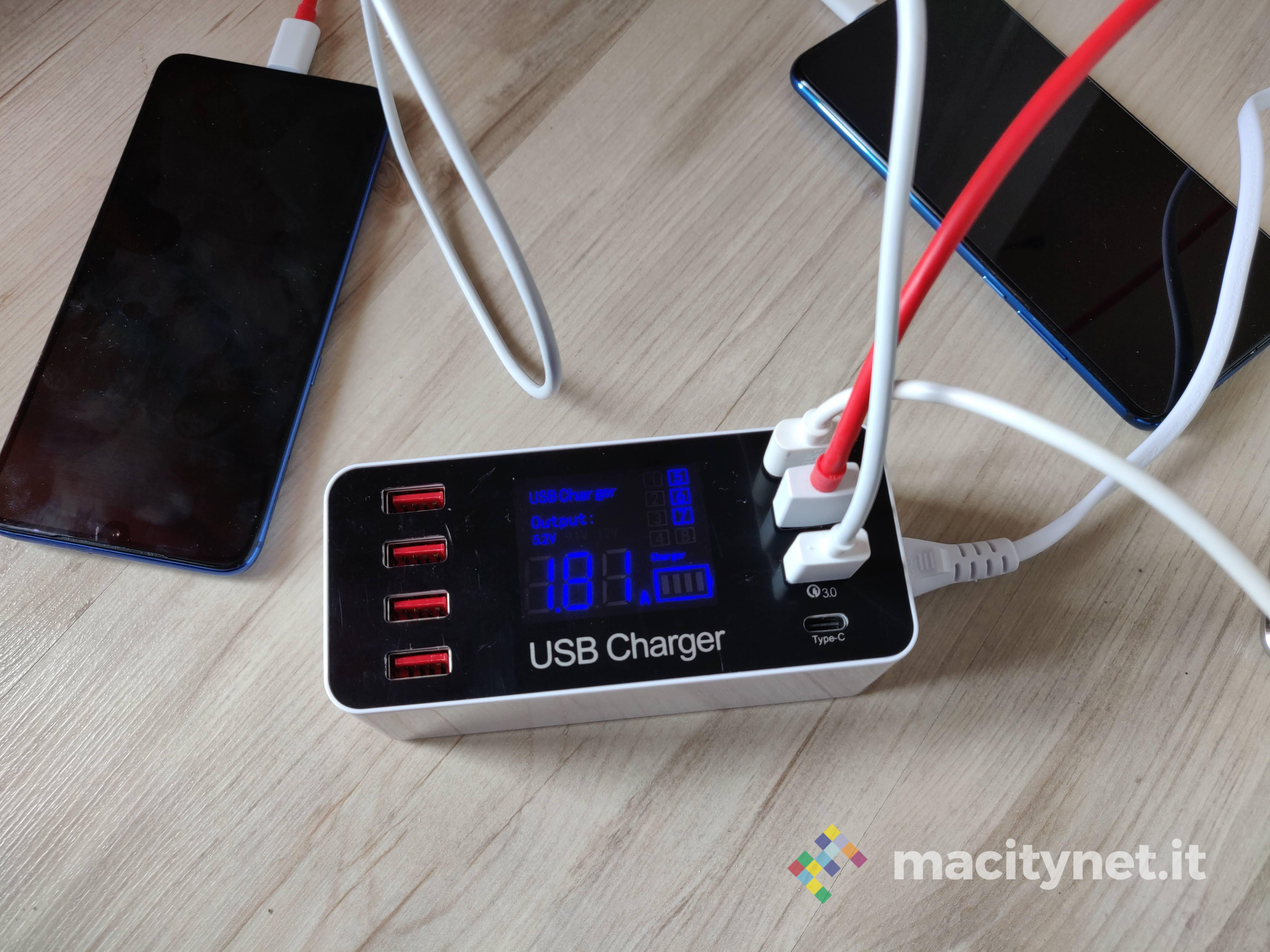
During the recharge tests we noticed a stable speed, without voltage fluctuations, without the maximum and minimum peaks having recorded evident deltas.
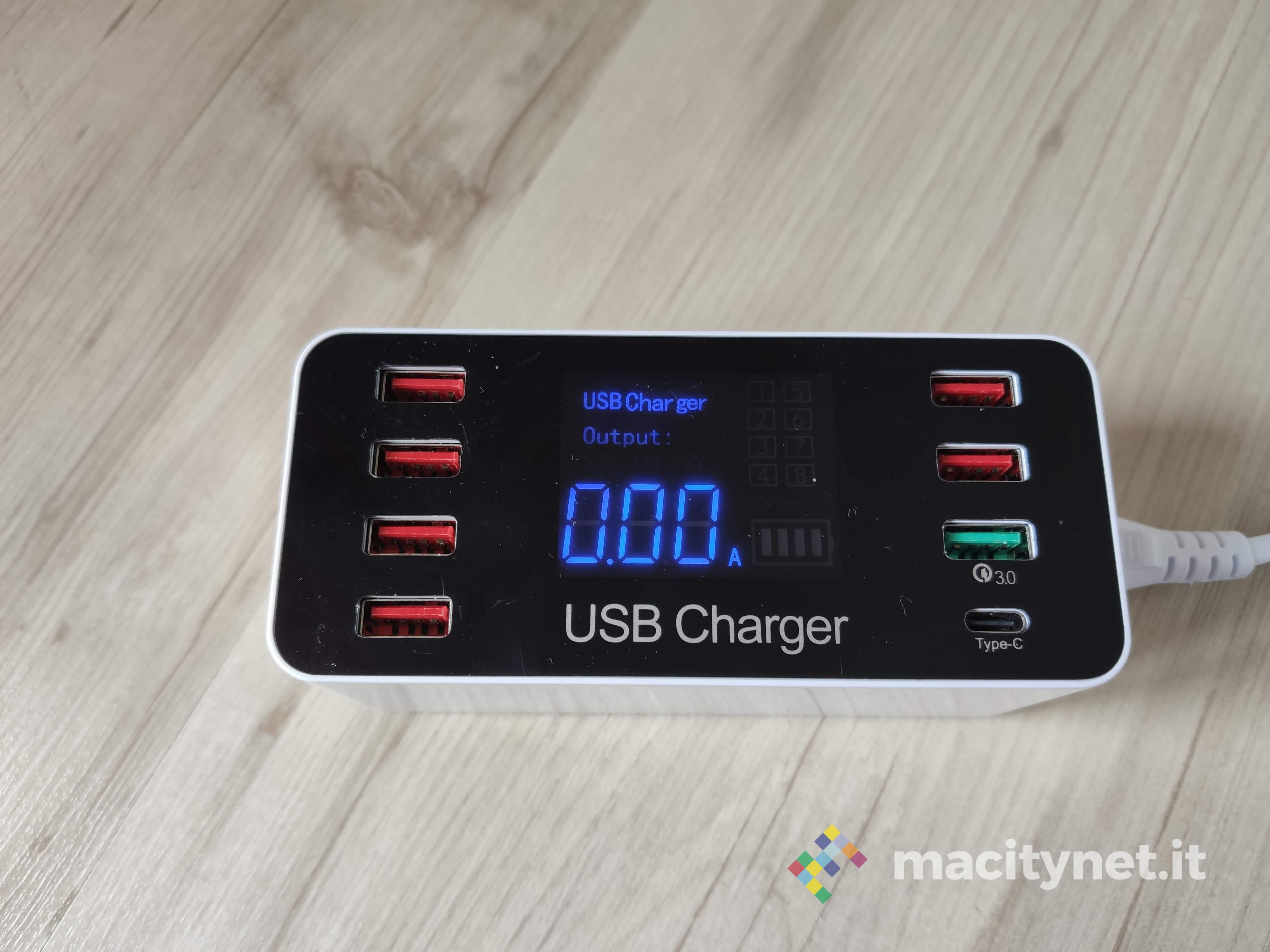
Conclusions
We are satisfied with the charging station under test: there are many USB ports, with a total output of 8A, which probably allows you to charge at least 4 devices simultaneously without limiting the charging speed too much.
Obviously, in case you need to recharge devices not equipped with fast charging, then it is also possible to go further with the number of devices connected at the same time.
It costs just 24 euros and can be purchased directly from here .
PRO
AGAINST





